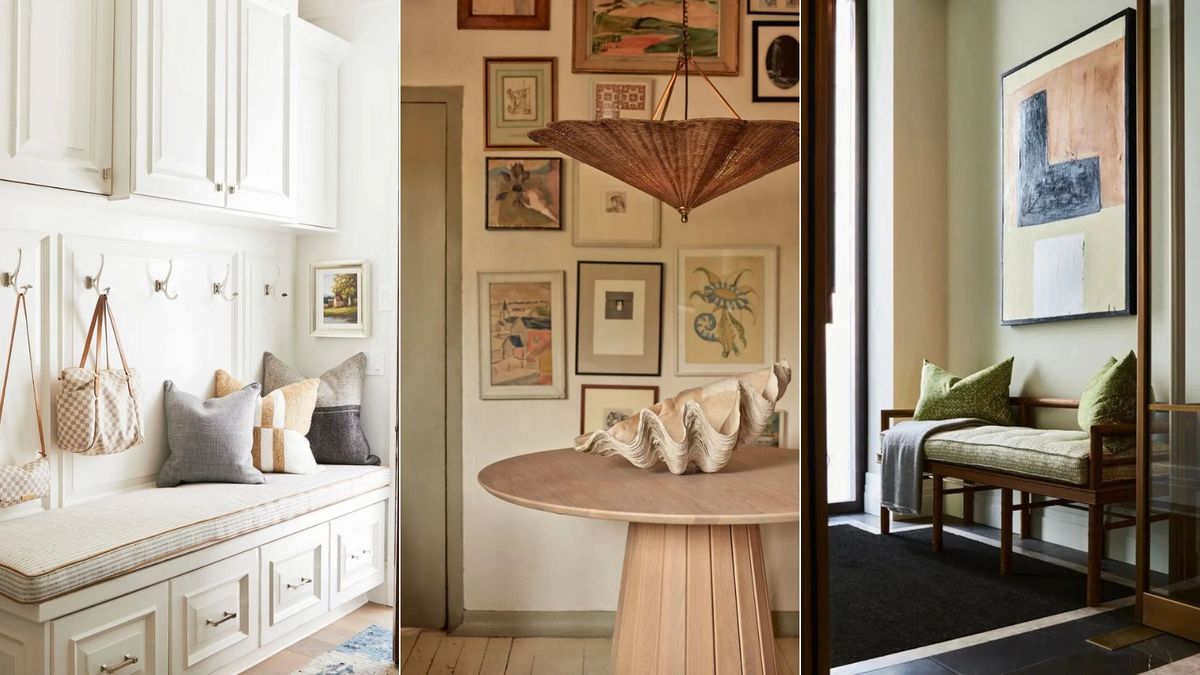EP01: Indians’ exposure to global cities influences design ideas

In a conversation with ETRealty, Zubin Master, co-founder and director of Design Matrix, Seema Puri, principal architect at SEZA Architects, and Amey Dhanukar, principal architect at ARA Design, talked about trends in luxury real estate, how technology and automation are changing architecture, and the need to keep cities unique despite global influences. They also discussed sustainable building practices, challenges with local laws, and how architects balance creativity with rules.
Over the last few years, especially after covid, what design trends have you noticed in the real estate sector, especially in the luxury and premium luxury segment? What changes have you seen, and how do you think these trends will evolve in the next year or two?
Zubin Master: Since covid, we’ve seen big changes in how people want their homes. They want larger, more comfortable spaces and are unwilling to compromise on quality. Luxury housing has grown significantly, with many developers offering premium options across the city. Second homes have also become very popular, which I think is a great trend. People now want open spaces, personal areas, and a lifestyle that allows them to relax and feel at ease at home. Homeowners also want the best materials, lighting, and furniture to match the size and luxury of their spaces. It’s exciting to see this focus on luxury living, and I hope it continues. People today are more exposed to global trends thanks to social media and international travel. Many homeowners want to bring these modern designs and products into their homes.
How does this affect your work as an architect?
Seema Puri: When we design homes or villas for individuals, their personal style and preferences are key. Clients come to us because of our experience, but the final design must reflect their tastes and personality. Today’s clients are very informed. They travel a lot, are active on social media, and are aware of the latest products and trends. While we respect their preferences, we also guide them. If something trendy doesn’t fit the overall design or space, we tell them. But we always try to incorporate their ideas into the home, so it feels truly theirs.
We have experienced architects and many young, budding architects in the field. How do you maintain your identity and stand out? How do you bring new ideas and designs while competing in this space? Are clients open to these new concepts?
Amey Dhanukar: Today’s architecture is often influenced by past ideas, so it’s not always about trying to be completely different. It’s about creating something that feels right, fits well, and reflects your creativity and design style. We work with modern techniques like parametric design, and India has always been ahead in architecture. What has changed today is that clients, especially the younger, second-generation ones, are more open to new ideas. They want fresh concepts and modern designs, making it easier for us to introduce these changes. It’s exciting to work with clients who are ready to embrace this shift.
Every city used to have its own character. Now, cities seem to look the same, with similar buildings and designs. Is this because of architects, financial constraints, or people’s desire to copy global cities like New York or Hong Kong?
Zubin Master: I think many architects in India will agree with me. We are missing a “design code”—a set of clear rules to guide how cities should look. Globally, cities like Berlin or parts of Mumbai, like Marine Drive or Ballard Estate, have such codes. They help maintain the character of a place. In Mumbai, we don’t have a unified design guideline for the whole city. While we have rules for structure, safety, and facades, there’s no clear design direction. As a result, buildings are being created randomly without a shared vision. Without a design code, we’re trying to compete with cities like Shanghai or Hong Kong, but we’re losing our uniqueness. If we had proper design guidelines, architects could still be creative but within a framework that preserves the city’s identity.
Seema Puri: I believe design should reflect the time we are living in. It needs to be modern and relevant. Today, people want buildings that could fit in anywhere in the world, whether in India or abroad. In the past, cities like Delhi used materials like red sandstone in their architecture. While some modern buildings might still use red sandstone, we don’t recreate Mughal-style arches or old designs. Instead, we take inspiration from the past but adapt it to today’s context. Social media and globalization play a big role in this. People know what’s trending worldwide and expect designs that feel global. As architects, we are influenced by this and are often asked to deliver designs that match global standards.
What about the identity of cities? Do you think it’s getting lost because of this trend?
Seema Puri: I don’t think it should be lost, and many architects are working hard to make sure it isn’t. As I mentioned earlier, factors like the climate and the location are very important in designing relevant architecture. For example, we need to consider the surrounding buildings while designing. We worked on restoring an old building in Napier. We used modern materials but kept the design in line with the scale and look of the nearby structures. It suited the space without being flashy or trying to stand out unnecessarily. Good architecture should enhance the area and blend in, not scream for attention.
How much creative freedom do you get from builders or clients to design something inspired by old or unique styles?
Zubin Master: I think this depends on the maturity of the architectural firm. Established firms with experience often get more creative freedom. Clients trust them to come up with concepts and rely on their expertise. They ask us to bring out the best ideas, and this trust allows us to be more expressive and creative.
Do you get creative freedom in your projects?
Amey Dhanukar: Yes, we do. It depends on the type of project. For example, if we are designing someone’s home, we focus on the personal preferences of the person living there. It has to reflect their individuality. But when we work on larger, public architecture, we usually have more creative freedom. Clients come to us because they trust us to bring creativity and give direction. These days, many clients want spaces that not only stand out but also fit well into the overall environment. This allows us to balance creativity with functionality.
Zubin mentioned something about having a design code. What are your thoughts on that?
Amey Dhanukar: I think having a design code is very important. For architects, creating something new is always aspirational, but we need clear guidelines from municipal bodies or authorities to streamline this process. For example, in London, even a small house extension must get approval from the council, which ensures that designs fit the city’s character. In Mumbai, there’s no such cohesive approach. If you cross the sea link, you’ll notice how different one area looks from another. A proper design code can bring consistency while allowing room for creativity.
Let’s talk about technology. How do you see it being used in architecture, both in design and project execution?
Amey Dhanukar: Technology plays a big role in making architecture more sustainable and efficient. Tools like automation and project management software help streamline processes and reduce waste.
In design, tools like BIM (Building Information Modeling) and other technologies allow us to plan better and make more accurate designs. These tools not only save time but also make projects more environmentally friendly and adaptable to modern needs. Technology helps us improve both the design and implementation of projects in a significant way.
Does automation make things more affordable and easier for residents?
Seema Puri: Let me give you a simple example. Imagine a large window, maybe 20 or 30 feet high, with glass panels. Without automation, opening or closing it would be really difficult. But with automation, it’s much easier and more efficient. Automation also helps with other things, like controlling lights and temperature to create the perfect mood or atmosphere. You can manage everything, like turning on lights at 6 PM, with just your phone or tablet. It’s all about making life simpler and more convenient for the residents.
How much is this being included in new projects? Out of 100 projects, how many would have automation?
Seema Puri: Almost all private homes and villas include automation now—about 100%. Everyone wants it, though some may choose to limit it, like not automating outdoor areas or landscapes. But in some form or another, automation is included in nearly every project.
How do you handle municipal laws when designing sustainable and creative buildings? Sometimes, these laws don’t allow certain ideas, and in some states, architects are allowed to approve occupancy certificates. However, this has caused problems, as some architects were penalized for approving incorrect plans. If given this authority, how would you manage it?
Seema Puri: Building bylaws have changed over time. Earlier, people misused the flexibility in the laws to do things like creating large car elevators that were later converted into internal spaces. To prevent such misuse, the newer 2034 bylaws became stricter. For example, projections like chadjas were reduced to strict limits. While this restricts design freedom, it helps ensure everyone follows the rules.
The 2034 bylaws have also simplified some processes and made things more transparent. With everything online now, getting an Occupancy Certificate (OC) is quicker and more straightforward.
However, there must still be checks and balances. Without clear guidelines, misuse can happen, as we’ve seen in some cases. Transparency is important, but so is ensuring the rules are followed properly to maintain fairness and order in design and construction.
Amey Dhanukar: Some people misused the old rules, which is why stricter ones were introduced. For example, I know a building in Juhu with a car lift that leads to a parking area, and only then can you enter the house. This was done to increase usable space unfairly, where people paid for 100 square feet but got 300 instead. The new rules have controlled such misuse, but they aren’t very favorable for creative design and architecture. Instead, they focus more on preventing misuse. After 7-8 years of these rules, it’s time to allow some flexibility for innovative designs, like incorporating greenery on every floor, as we see in places like Singapore. However, even now, there are ways to work around the rules, as seen in cities like Haryana and Mumbai, where loopholes are often created alongside new regulations. This is something we’re still navigating in our system.
Zubin Master: There’s still plenty of room for creativity in architecture. The building bylaws don’t completely limit us. Sure, there are some rules we have to follow, but the opportunities for design are vast—it’s like having a big canvas to paint on.nThat said, some rules can create challenges. For example, buildings being placed very close together can lead to mismatched designs, making the streets look cluttered or unattractive. While individual buildings might stand out for their design, the overall look of the street can suffer, which is disappointing. But even with these constraints, we’re seeing some incredible projects coming up.
link









